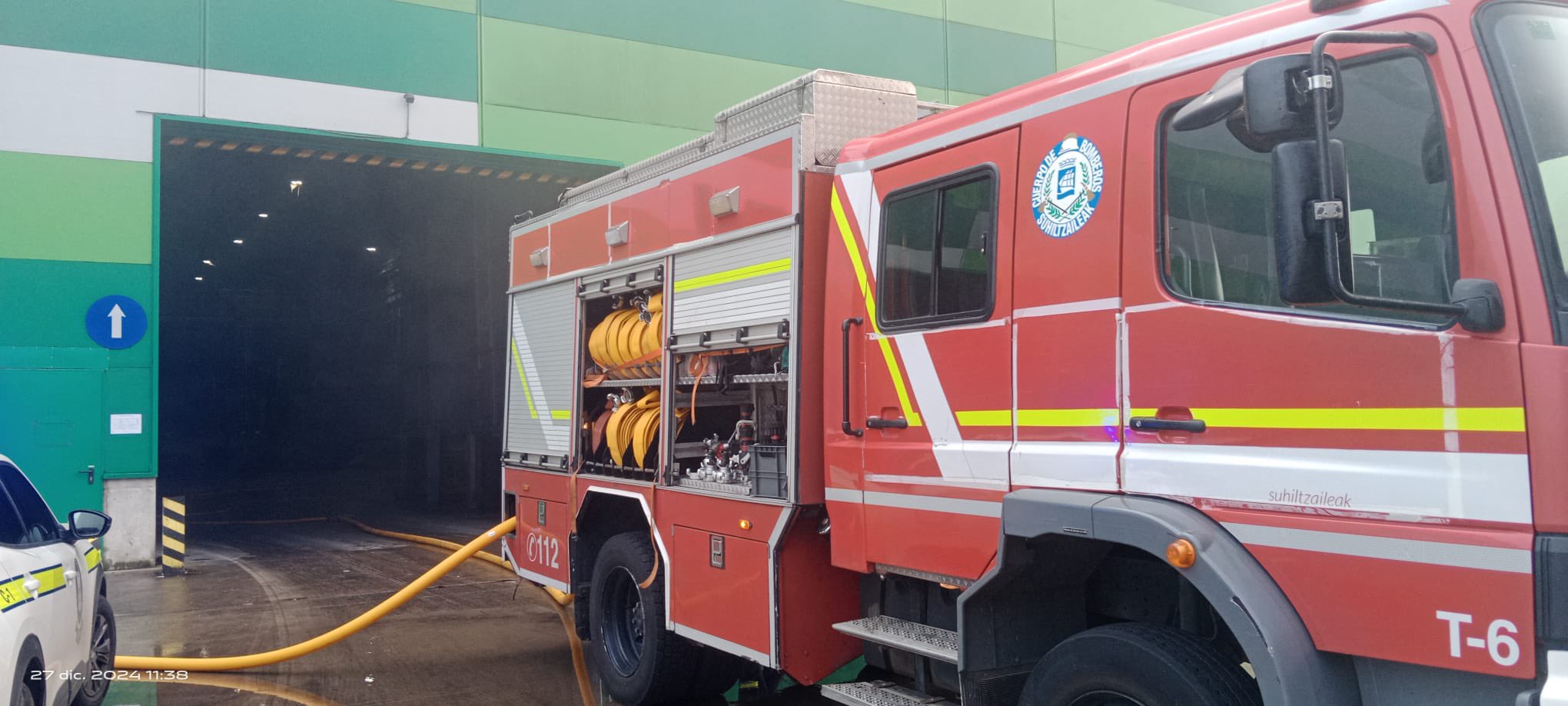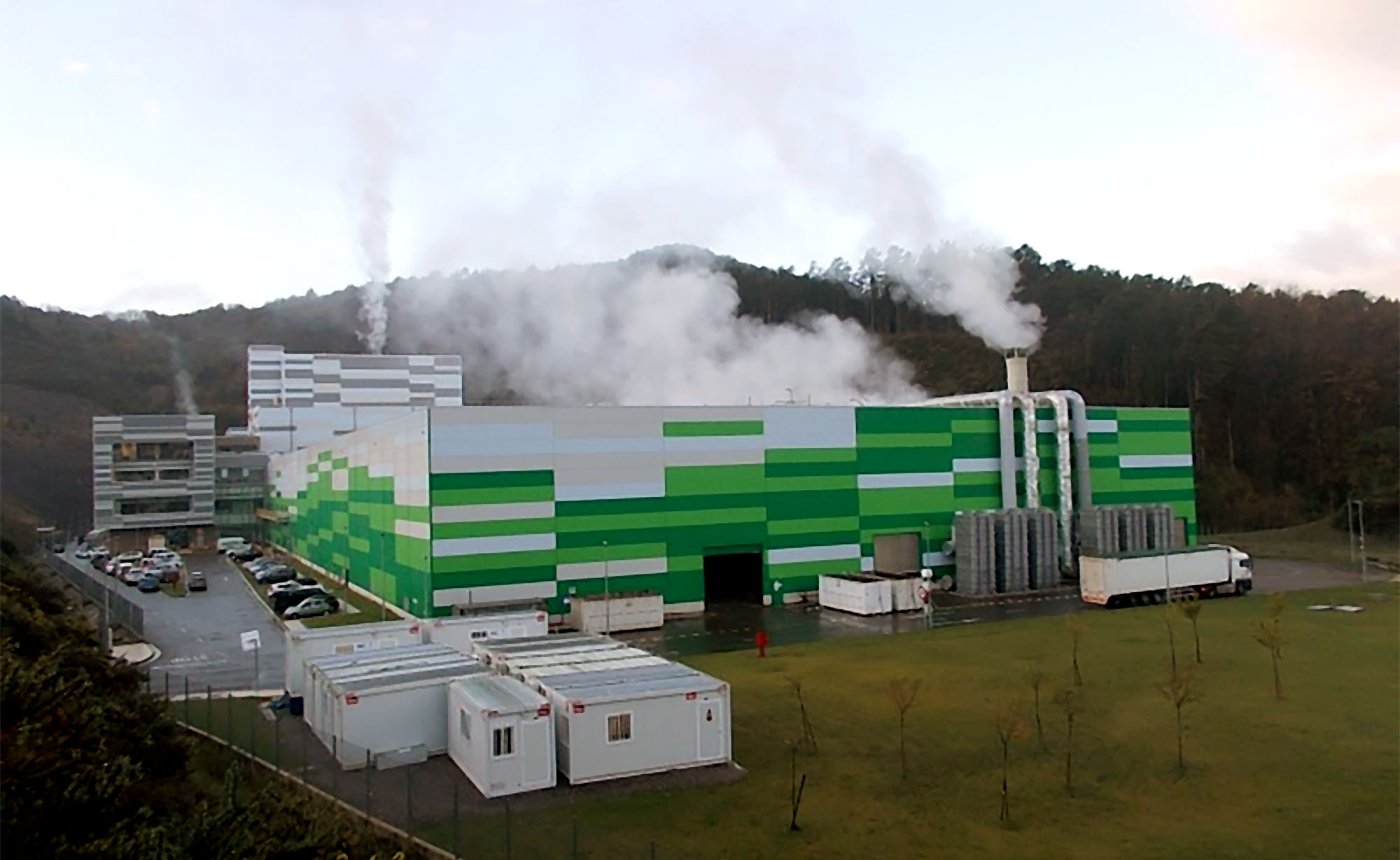GHK aims to reorient dioxin and heavy metals found in groundwater at the Zubieta incinerator to the Zurriola beach
- The Gipuzkoa Waste Consortium has asked the Ura Agency for authorisation to evacuate all contaminated dirty water from Arkaitzerreka that passes below the Zubieta Incinerator and its transfer to the sanitation system. If the water and the Basque Government allowed it, Arkaitzerreka would disappear almost entirely… when the pollution detected two years ago and which has still not been clarified by the GHK.

The news has been advanced by Noaua de Usurbil magazine, which provides documentary proof of the web of the Provincial Council of Gipuzkoa: “The GHK has requested authorisation for the construction of a pumping system in Arkaitzerreka.” In fact, on the eve of the long bridge of Todos los Santos, on 28 October, the Official Bulletin of Gipuzkoa has been published, passing unnoticed by the majority of the population, the request for authorization of the Consortium of Residues of Gipuzkoa (GHK) for the construction of a pumping system to the exit of the drainage pipe from the bottom of the municipality of the pozzgiza The application for authorisation shall be submitted to public information by the Basque Water Agency within 23 working days, "Thus, those who consider themselves affected by such works may lodge complaints within that period in: Basque Water Agency - Office of the Eastern Cantabrian Basins".
The request for authorisation published in the newsletter specifies what the GHK intends to build in the area that emerges after passing below the incinerator in Arkaitzerreka: "A new pumping well will be built at the exit of the bottom drainage pipe, next to the stream Arkaitz, of 2,00 x 2,00 square metres, and a PE Ø100 mm drive pipe will be run from the well to its connection to the existing sewerage network next to the tunnel access the incinerator facilities".
The intention of the GHK is therefore: Collect the Arkaitzerreka waters contaminated by the Zubieta incinerator from at least May 2020, pump to the level of the incinerator and pour here into the sanitation network. The newsletter of the Provincial Council of Gipuzkoa does not specify whether the diverted waters of Arkaitzerreka, together with the rest of the waste water from the industrial site, will drive them to the Loiola treatment plant, although the newsletter states that "connect them with the existing sanitation network next to the tunnel of access to the incineration plant". It is also not mentioned in the newsletter if the diversion will completely wipe out Arkaitzerreka with a patch to hide contamination.
It is curious that the GHK, with the support of the main authorities of Gipuzkoa, asks for authorization to build a bypass for the contaminated waters of Arkaitzerreka… when the GHK has not yet clarified either what pollutant the stream is getting dirty, what is the origin of this serious pollution, or who is responsible. And it is possible that the GHK will ensure that these poisoned waters are eliminated before the eyes of the citizens and taken out of Zubieta, before the Gipuzkoan authorities inform the citizens of these pollutions caused by the incinerator of Zubieta and before the courts can clarify and punish this serious crime against the environment. [Updated on 3 November at 13:30] AnclSOS has today offered further information and assessment on the authorisation requested by the GHK to divert the poisonous waters of Arkaitzerreka. The full AnclSOS document is as follows:
GHK wants to reorient dioxin and heavy metals found in groundwater at the Zubieta incinerator to the Zurriola beach
The GHK Patzuergoa has asked the Basque Water Agency (Ura) to authorize the discharge and discharge of water to the Añarbe collector, being able to leave the Monpas drain, in the vicinity of the Zurriola beach, without purification of dioxins and other pollutants, as the system established in the EDAR of Loiola is not adequate
According to the text of the authorization requested, the GHK intends to build a pumping system “at the exit of the drain bottom of the vaguada of the platform cmg1 that poured into the stream Arkaitz in the neighborhood of Zubieta”. All this “to connect with the existing sanitation network next to the tunnel access the incinerator facilities from the well”.
“What is made public during the period of twenty-three working days, counting from the date of publication of the notice in the Official Gazette of Gipuzkoa, for your knowledge by the URA Agency. In this way, those who consider themselves injured by such works may lodge complaints within that period at: Basque Water Agency - Office of the Eastern Cantabrian Basins. The file will also be available to interested parties in the same office.” The report of the work of the Ura offices states that the works will last for two months and a budget of 369,087, 50 euros.
The content of the request from the GHK to Water will be the only item on the agenda of the meeting of the Water Consortium convened today, 3 November in the afternoon. It shall inform members of the “Filtration of leachate without environmental conditions”, in particular of the corrective and preventive measures taken.
Concerning the “environmental condition”, the report in the request states that the current discharge is not “suitable for the river”. And although the letter does not specify the specific reasons for this qualification, the public reports requested by the GHK itself in the hands of the Vice Ministry of the Environment of the Basque Government show that in the last two years dioxins and furans have been detected in these groundwater “34 and 62 times the accepted values of severe contamination, according to measurements”. [According to Idom measurements in 2021]. Heavy metals, ammonium, chlorides,
phenols and TPH (hydrocarbons) have also been found. They are all common in the burning of waste, in general and in plastics in particular. Lindane has also appeared in some samples.
On the other hand, the “sanitation network” in which the landfill is to be redirected is the interceptor of Añarbe, equipped with a sewage treatment plant in the Loiola district of Donostia-San Sebastián, leaving to its sea in Monpas and poured into the waters of the Zurriola beach. Concerning purification, please note that the EDAR of Loiola is not equipped with the technical procedures necessary to deactivate the pollutants poured
by the incinerator. The three equipment in which the treatment plant is located, such as the “pre-treatments”, which is responsible for the re-integration, dreading and de-grading of thick and thin, or the “biological treatment to remove dissolved organic matter in water” and the “decantation”, do not allow to purify these polluting components of the discharge incineradora.En as well as the other authorizations
without environmental authorization,
By reviewing the text of the AAI, condition 3.4 does not provide for the generation of discharges from the effluent generated at the different phases of the incineration process, but by ordering that they be used in their entirety instalaciones.Por, the
EIA expressly states that no “emission of arcane flows” is foreseen and that “process waters will not be poured into the Consortium Interceptor.” As for the EDAR, the incinerator has a single “provisional authorisation for disposal to the sanitation network” in Añarbe, issued by the head of the Quality Control Department of the said entity on 29 April 2019. However, such authorisation is granted as “uncommon domestic use”, i.e. hygienic services, dressing rooms or cooking (if any) of faecal waters of origin or industrial waste which can be assimilated by nature to a domestic spill.
However, according to the Sewage and Landfill Regulations of Añarbe, “waste water that may have a risk or extraordinary impact on the environment or in the process of purification is not equivalent to “domestic”. Prohibited substances are expressly mentioned: Chlorides, copper, zinc and phenols. These were the components that were extracted in the
analyses requested in July by the City of Usurbil in the Arakitzerreka canal.
The events that led to these GHK measures began in July this year. AnclSOS reported to the Public Prosecutor’s Office on 14 July 2022, the same day that the Arkaitzerreka canal appears red and filled with foam at the exit of the bottom drain from the incinerator platform. In the press release sent on July 16, the association denounced that “we could be facing a leakage from leaching and installation processes”, which could generate the aforementioned pollution. The GHK sent four statements dismissing these discharges on different
dates. The expression of Ancuses considered this as “malicious manipulation” and a
“supposed information”.





















